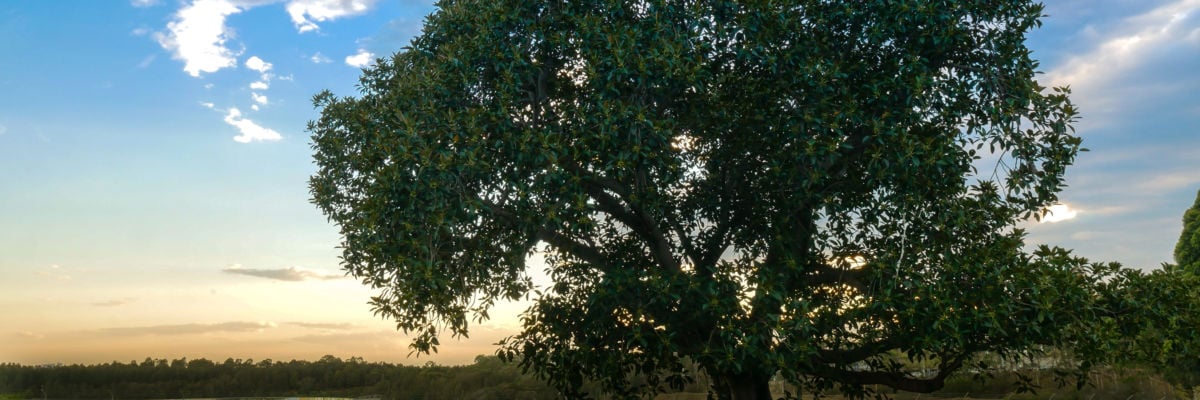
A perplexing story about Jesus in the Gospels is the account in which he curses a fig tree. It is found in Mark 11 and in Matthew 21.
The incident occurs when Jesus makes his way to Jerusalem for his final Passover. However, it is related differently in the two Gospels.
Mark 11 presents Jesus first as cursing the fig tree (vv. 12-14), then clearing the Temple (vv. 15-19), and the next morning, the fig tree is seen to have withered (vv. 20-25).
But in Matthew 21, Jesus first clears the temple (vv. 12-13) and later curses the fig tree (vv. 18-20), after which it immediately withers (vv. 21:21-22).
What explains this difference in order? Matthew may have presented the material about the fig tree together because it deals with the same subject: the fig tree. This is in keeping with the way Matthew groups material topically.
Mark’s ordering of the events may be chronological. However, Mark also has a special way of ordering material, which scholars call the “Markan sandwich.” A sandwich occurs when Mark interrupts one story with another before returning to the first. This allows Mark to contrast the two stories so that they shed light on each other.
Scholars have proposed that this is what is happening in Mark’s accounts of the cursing and withering of the fig tree with the clearing of the Temple interposed. In fact, this is one of the most famous Markan sandwiches. So Mark also may be ordering these events in a non-chronological way.
In the story, Jesus sees a fig tree in the distance. Mark notes that it is “in leaf” and that it is “not the season for figs.” This is consistent with the timing of Passover (late March or April).
Jesus then “went to see if he could find anything on it.” Why does he do that if it is not the season for figs? This seems strange.
“If, however, as Pliny the Elder noted in his Naturalis Historia (16.49), the fig tree stands out as a tree that produces fruit before leaves (cf. Mark 13:28 . . .), the presence of leaves makes intelligible to Mark’s readers why Jesus went to the tree in search of something to eat” (Craig Evans, Word Biblical Commentary on Mark 11:13).
There are several possibilities for what Jesus may have hoped to find on the tree, including unripe but edible figs. However, he finds nothing.
Jesus says to the tree, “May no one ever eat fruit from you again.” At first glance, it seems like an act of gratuitous malice. Why should Jesus curse a tree—especially when it isn’t even the season for it to be bearing fruit? The Law of Moses even condemned the needless destruction of fruit trees (Deut. 20:19-20).
The fact that Jesus perfectly observed the Law (Matt. 5:17-18; Heb. 4:15) suggests that this does not constitute the needless destruction of a fruit tree. It has a purpose, and what happens next clarifies that purpose.
The party enters Jerusalem and goes to the Temple. There, Jesus “began to drive out those who sold and those who bought in the Temple, and he overturned the tables of the money-changers and the seats of those who sold pigeons.”
Note that in this passage and the previous one, we witness a similar phenomenon: apparently unprovoked anger on Jesus’ part. Just as Jesus lashed out at the fig tree, he lashes out at the people doing commerce and changing money in the temple. This connects the two events and provides a clue as to why Jesus cursed the fig tree.
The people Jesus drives out are those who bought and sold items relating to the functioning of the Temple itself—specifically, to the animals that were offered there in sacrifice. Mark alludes to this when he speaks of “those who sold pigeons” (pigeons being one of the sacrificial animals).
The “money-changers” served the temple-goers in ancient Jerusalem, who needed to change the Roman currency that had pagan images—including emperors, some of whom were worshiped as gods—for money that could be used at the Temple.
Jesus explains his actions by saying, “Is it not written, ‘My house shall be called a house of prayer for all the nations’? But you have made it a den of robbers.”
The statement Jesus quotes is from Isaiah 56:7. Today, we think of the Jerusalem Temple as an exclusively Jewish institution, and the idea of it being used for prayer by Gentiles (“all the nations”) seems strange. However, Gentiles did pray there. They even had sacrifices offered for them by the Jewish priests. In fact, the stopping of the sacrifices for foreigners, including Caesar, was one of the precipitating events of the Jewish war of the A.D. 60s (Josephus, Jewish War 2:17:2[409-410]).
The outer court, the so-called “court of the Gentiles,” was very large, and it was apparently here that the sellers and money-changers set up shop. This space was meant for the use of the Gentiles to worship God, but instead, unscrupulous merchants were using it. Thus, Jesus quotes Jeremiah 7:11, asserting that they have made it “a den of robbers.” And “when evening came they went out of the city” and return to Bethany.
In the morning, as they return to the city, they see that the fig tree has withered. Peter remembers the curse Jesus put on the tree and says, “Master, look! The fig tree which you cursed has withered.” This was evidently a surprising and impressive event for Peter.
Jesus tells them, “Have faith in God. Truly, I say to you, whoever says to this mountain, ‘Be taken up and cast into the sea,’ and does not doubt in his heart, but believes that what he says will come to pass, it will be done for him.”
By pointing to the power of faith in God, Jesus indicates the means by which the fig tree withered so quickly: Jesus had faith in God that it would happen, and it did.
Many earlier commentators have failed to appreciate the fact that the clearing of the temple occurs between Mark’s two halves of the fig tree narrative, suggesting that they did not see its relevance. However, given Markan sandwiches, we should be alert to elements connecting the two. There are a number to be found.
The interrelation of the clearing of the Temple (vv. 15-19), and the cursing (vv. 12-14) and withering (vv. 20-21) of the fig tree, is established at several points. For one, all the material between Mark 11:1 and 13:37 is oriented around the Temple; this is itself a cue that there is a relationship between the fig tree and Temple. There is also a clear parallel between “his disciples were hearing” (v. 14) and “the chief priests and the scribes heard” (v. 18). Above all, the fig tree is often in the Old Testament a symbol for Israel, and more than once Israel is judged under this symbol, “There will be no figs on the tree, and their leaves will wither,” said Jeremiah (8:13). In connection with this is the intriguing statement that “it was not the season for figs” (v. 13). This statement surely has less to do with horticulture than theology. The word for “season” (kairos) is used at the opening of the Gospel, “‘The time (kairos) has come,’ said Jesus, ‘the kingdom of God is near’” (1:14). Kairos means a special, critical moment. There is no fruit on the tree because its time has passed. The leafy fig tree, with all its promise of fruit, is as deceptive as the Temple, which, with all its bustling activity, is really an outlaw’s hideout (v. 17) (James R. Edwards, “Markan Sandwiches: The Significance of Interpolations in Markan Narratives,” Novum Testamentum XXXI, 3 (1989), 207).
There is also the fact that, in both narratives, Jesus lashes out, first at the fig tree and then at those in the Temple complex. This is perhaps the most direct parallel between the two narratives, and it provides the key to understanding them.
By cursing the fig tree, Jesus is enacting a physical parable of what will happen to the Temple. The time when the fig tree produced fruit is passed. In the same way, whatever fruit the Temple may have borne in the past, at the time of Jesus, it is corrupt and has become a “den of robbers.”
Thus, just as no one will eat fruit from the fig tree in the future, the time of the Temple itself is passing. Jesus makes this explicit later by prophesying its physical destruction (Mark 13:1-2).
The fact that Jesus uses the fig tree as a parable of the Temple sheds light on why he cursed the tree even though it was not the season for figs. Only a tree without fruit is suitable for this physical parable. Thus, he seeks to see if it offers anything edible. It does not, and so instead, he uses the occasion to enact the parable.



